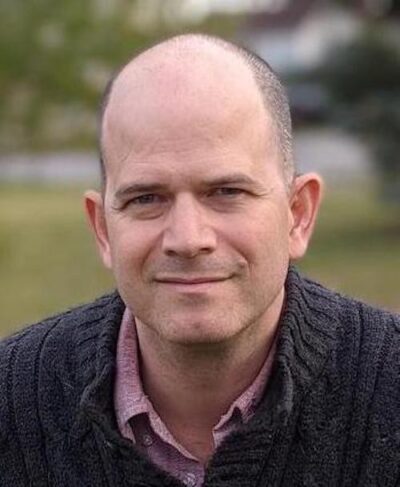Connecting the Digital Dots
History professor creates machine-learning method to help researchers dig deeper into antiquities trafficking
By Alyssa Tremblay
How do you see something that you never thought to look for in the first place?
This is the problem faced by those who study antiquities trafficking — the thieving, looting and illicit trading of cultural artefacts — and the murky international networks that sustain it.
To overcome this challenge, Carleton digital archaeologist Shawn Graham and his team have designed a groundbreaking methodology that lets researchers re-examine this complex web of illegal activities with a fresh pair of AI eyes.
Published in the latest issue of Advances in Archaeological Practice, a journal of the Society for American Archaeology, Graham’s methodology has caught the attention of academics and law enforcement alike, resulting in promising new research into some of the trafficking world’s most notorious figures.
“In the digital humanities, there’s an idea called ‘deformation’: What might we see if we could look at something familiar as if it were brand new, entirely alien and utterly fresh? I think of this approach in those terms, in that it deforms what we know such that new possibilities are made visible.”
Professor Shawn Graham, Department of History
The approach in question is a machine-learning model that uses established facts about the illegal antiquities trade to identify previously unnoticed possible connections.
Graham created the model with help from Carleton data scientist Ahmed El-Roby, making the project one of the first-ever collaborations between the university’s School of Computer Science and the Department of History.
He also worked alongside archaeologist Donna Yates from Maastricht University, whose involvement in the Trafficking Culture Encyclopedia — an online repository of over 100 researcher-submitted case studies describing documented instances of trafficking between individuals, museums and art galleries — helped provide the model with a “perfect test set” of data to work from.
According to their co-authored paper, the machine-learning model used the information in these encyclopedia entries to suggest “connections between actors and institutions hitherto unsuspected and not otherwise present” in the existing data, producing leads or “good tips” for researchers to follow up on.
Think of it less as the hardworking detective pounding the streets for clues and solving the case, and more as the perceptive sidekick who notices an overlooked detail when examining all the gathered evidence.
“The model doesn’t tell us fact; it gives us suggestions that we would likely have never considered on our own,” explains Yates. “We don’t know if a tip is true or not — we have to do investigative work to determine that. But since it is based on information that is true, we can consider it worth following up on.”

Indeed, following up on the very first tip produced by this method has already led to intriguing evidence about how a well-known convicted Latin American antiquities criminal seems to have laundered his reputation by making small donations to museums in advance of major sales, tax evasion or fraud schemes.
“This is an aspect of how he operated that we’ve never documented before,” Yates says. “It shows a pattern within his crime that we would have never thought to investigate, if the model hadn’t suggested it.”
Yates presented the group’s research findings to archaeologists, prosecutors, police and financial crimes unit investigators at a recent training event in Mexico City hosted by the Mexican government and the EU’s Global Facility on Anti-Money Laundering and Counter Terrorism Financing.
As for the future, Graham is working on using artificial intelligence to streamline the methodology even further, semi-automating the process and drastically reducing the amount of time previously spent annotating the information that gets fed into the model.
“What took us several months of annotation by hand can be done in an afternoon now with the AI,” he says, emphasizing how that hard and necessary work was made possible thanks to the efforts of Carleton History graduate students Chantal Brousseau, Jonah Ellens and Callum McDermott.
“Our grad student co-authors were so important to this entire process, from gathering and annotating data, to figuring out the data transformations and coding, to error checking and writing. We couldn’t have got this far without Chantal, Jonah and Callum.”